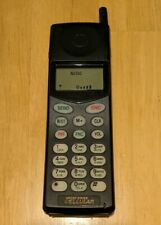Technical Writer

Technical Writer-First Things To Do On The Project
OVERVIEW-You, a non-writer, have just been assigned to write the documentation for a product your company produces or markets.
You may be stressed out about the assignment. Fear not! This article will get you started on the path to writing a successful document.
QUESTIONS AND NOTES
As soon as you get assigned to the documentation project you must begin to take notes and ask questions. The major goal of this early information gathering is to gain access to the sources of information that you will need in order to write your document.
TIP: There is always something to do or learn on a Documentation project. Don’t stop working while you are waiting for something else to happen.
LEARN PROPER USE OF YOUR WRITING TOOLS
Do NOT get immersed in new technology. For most companies and for most documentation projects, investing the money and time to learn a Content Management System or exquisite document writing software are not worth the effort.
Documentation writing is often the tail end of a project, and you will have no time to learn new technologies. Instead learn to get the best from your existing word-processing tools.
* Learn about and understand why you should use your word processor’s “styles” for formatting your document.
* Learn to use your word processor’s outlining capability. The outliner automatically assigns styles to the headings in your document. Design your Document using your word processor’s outlining capability.
* Learn how to use your word processor’s revision system. The revision system is a facility where the author writes a document and then sends it to a reviewer.
The reviewer can make revisions to the document, and sends it back to the author who can choose to either accept or reject each revision.
Technology comes second. Our goal will be to produce a great document, providing the:
* content (the information that your Reader needs or wants) and
* effective access to that content.

DOCUMENT ALL PEOPLE ON THE PROJECT
The people who are working on the project include (there may be others, include them in the list):
* Project Manager
* Those who will approve the parts of the Document, and who will approve the final Document
* Project Team
* Contacts
* Marketing
* Sources of Information
* Publisher of Document
* Editor
* Indexer
Keep this information about each member of the product and documentation team:
* Full Name
* Role in the Product Development
* Organization and Position in the Organization
* E-mail address
* Telephone contact (FAX number)
* Office address (if there is a company-wide directory, get the address from there, when you need it)
* Their expertise and what they did on the project
* Any other relevant information
DO IT NOW: LIST THE PLAYERS
You can keep the list using a word processor, spreadsheet, or dedicated address-book software and in your e-mail program.
Keep the list up to date.
YOUR PATRON
Let’s call the person that assigns you the task of writing the document (or a portion of it) your “Patron”. This is the person who is responsible for ensuring that the documentation gets produced.
There are several things you must ask of your Patron, and you must carefully note the responses.
Ultimately, your Patron must provide you with (or put you in contact with someone who can provide you with):
* Access to literature about the product
Includes marketing, design, concept information, documentation for similar products; in short, anything they will let you read that might be related to the product.
Once you get the written documentation, read as much as you possibly can about the product. A goal is to become the expert about the product.
* Access to the members of the project team.
Not only the names and contact information, but also provide the “clout” to get these people to provide information to you. This is vitally important!
This access must include the marketing and design teams. They can tell you about the potential Users of the product.
* Access to the product itself or a mockup of the product.
So you can gain some hands-on experience with the product.
Access to Users of similar products; access to potential Users of this product (or information about them)
If you have been hired by, for example, the Human Resources Department of the company, then Human Resources will have to direct you to the person on the project who is your Patron. Your Patron is not your client.
In the business world we speak of our “client.” That is usually the person or organization that hires and pays us. It’s the one we are working for.
However in reality your client is your Reader. It is your responsibility to do the best job for your Reader. If it’s necessary to go against the judgment of your Patron then you must be prepared to convince your Patron of the merits of your way of doing the work.
Read all the material you can get about the product and the project . It will prepare you for the interactions you will have later with the project members.
Be prepared by knowing as much background information as you can before you have your first information gathering session (meeting).
Ask: “What can I read or do in order to get the background on this topic?”

Even if you are the developer, there are things you need to learn. One of the most important is concerns the characteristics your potential User.
Your early investigations should be aimed at answering these questions:
1. Overall (brief) Description of the Product.
What does the product do for the User;
How does the product change the way the User currently does things.
2. Intended Audience (the Users) for the Document and the Product
This is the “target market” for the product; information about who will use the product. This information could come from the marketing and design groups for the product. Ask them: “Tell me about your potential User of this product?”
3. Goals of the Document that You are Writing
This is the “scope” of the document…what is your document supposed to deal with regarding the product. See the next item on this list, item 4. Is your document to be a User Manual, Reference Manual, Setup Guide, or a combination of these?
4. Are there to be any other User Documents to be produced that are related to this product? That is, is the document you are working on a portion of the User
Document set that the organization will produce for the product? If yes, what are the other documents in the set (so you can refer to them in your document)?
5. The contact information that I discussed just above. For every question you might have, you must have a source (be that source written or verbal) for an answer.
The items on the above list would probably be answered by “higher level” members of the project team.
Perhaps your Patron can answer them; if not, he/she must guide you to where (or from whom) you can get the answers.
These are the first things you will write about in your User Documentation. Get this information early in the project.
In short, you need to get both written documentation about the product and contacts who you can ask to provide more information.
Eventually you will enter this information in a word processing document that you can share.
Document all of this information.
ASK ABOUT MECHANICS
Very early in the documentation project you should ask your initial contact about these writing-mechanics topics:
* What is the time frame for producing the documentation. When do you have to have the writing finished so that it can be edited and published.
* What are the Company’s (your company, group, division) Documentation Guidelines and Standards
Look over some acceptable documentation produced by the Company
* What are the Legal Guidelines for the documentation
You will need this for disclaimers, safety information, and the copyright notice
* How the document and components of it are to be approved by those responsible for the product and its documentation.
Ensure that you know when and how the components or stages of the document are to be approved. Know
who is to approve your writing. Stay in close contact with those people.
* What writing and outlining software does the Company use
Your software should be compatible with that of the Company
* Get a Style Manual
A style manual is a guide for selecting phrases. It sets down writing customs for your industry or Company. For example, the style guide for the indexing community says that the plural of “index” is “indexes,” not “indices.”
A mathematical style manual would select “indices” as the plural of “index.”
If your company has adopted a style manual, use that one, if appropriate to the product. If not, search an on-line bookstore for “Style Manual” or “Style Guide” and your industry, such as “Style Manual Mathematics”.
* What are you to deliver on this project?
* How will the document be published
Printed, on-line, Adobe Acrobat PDF, context-sensitive help, XML (so it can easily be manifested in any display medium)
Keep track of all this information. You will organize it and add to it as you this documentation project moves forward.
GIVE SOME INFORMATION
You should give everyone your contact information so they can get in touch with you. You might consider using your business card, and writing on it that you are writing the User Document for whatever product.
Make it easy for your contacts to get in touch with you. Ensure that you have your contact information in any e-mails or copies of the document that you send to others.
You should also tell your Patron how you plan to write the documentation. You will be writing the document in pieces (which are logical topics or modules), and provide the pieces to members of the product team for review.
Also (unless you are a professional writer, in which case you may do most of the editing yourself) make it known that you plan to use someone else to edit your document.
Interim materials that you provide might not be edited; you are providing them in order for reviewers (“experts” within the project team or marketing) to evaluate them on completeness and accuracy. You will ensure clarity of the writing in the (later) cycles of editing and revision.
One of my (ideal) goals for you is that you become the focus of all the User-oriented information about the product. You become the resource that others on the project turn to for information.
I believe that you should provide information to those involved (and especially those to be involved at a later stage in the project, such as the indexer) as early as possible in the life of the project. There are several benefits to this:
* They will learn about and think about the product and project. This will happen because people do want to do a good job… after all, it’s their livelihood.
* There will be fewer surprises. People know what is happening with the project, how their roles and timing might change. Encourage your Readers to comment back to you about anything related to your work.
Learn, learn, learn! Become the expert about the product and its documentation.
SET UP AN INFORMATION SHARING RESOURCE
I believe in sharing information…it makes for a better work environment and a better product. Use whatever available technology you have to create (or get created) some kind of resource to share information.
This information will be in the form of computer files…nothing magic.
You may be able to use a shared directory on a local network, or a protected area on your company’s intranet. Investigate what is needed. Provide read and write access to all the people (inside the company) who are involved on the project.
One of the first things to post is the list of people on the project. Make sure that whatever you post, it is in a form that everyone who has access to it can read (and possibly write) it.
NEXT STEPS
Other articles in this “New Technical Writer” series will assist you as you progress through the writing project. Look for them in the links in the “Resources” section.
New Technical Writer: The Four Dimensions Of Your User/reader

OVERVIEW
To create an effective User Document, the writer must know who he/she is writing for. This article presents four dimensions
(Skills, Attitude, Knowledge and Experience) for describing the User of your product (your Documentation Reader), and how to build a Persona that turns your generic User into an almost-real person
. The article stresses the need to actually USE this information when structuring and writing your User Document.
GETTING INFORMATION ABOUT YOUR USER
The marketing department or product development team should be able to tell you who the intended User of the product is.
(If they cannot, then the product is in big trouble.) Ask them to provide you with a complete description of the User.
Ask them if their description can be make less strict (requiring fewer skills, ect.) and thus be applicable for a wider audience. Ask them how sure they are of their intended Users.
Ask them if they created a “Persona” (see below) to design the product. If so, ask them for the description of that Persona.
We will use this information to analyze your User in four dimensions. We will then re-build the ideal User into an almost-real person, who you can use to help design and write your User Document.
Timing: My estimate is that if the communication paths between you and the marketing and development teams are effective, then you should be able to complete this series of steps in a few hours spread over several days.
This description of your User/Reader is an essential element in structuring and writing your User Document.
THE FOUR DIMENSIONS OF YOUR USER (Reader of your Document)
Four dimensions define your User/Reader. These dimensions are:
* Skills
What skills do you assume that your Reader must have in order to understand your User Document? (These are the skills that you assume that they have when they START to read your User Document… not the ones that you will teach them in the User Document.)
In a classic example of failure, a company that taught software programming did not specify that its students had to know how to use a particular computer word processor.
As a result, students spent 80% of the class time learning how to use the word processor, rather than learning to write programs. The class was a failure.
List the skills that you expect your Reader to have.
* Attitude
Your Reader’s attitude is almost always a combination of anger (impatience at having to read this stuff instead of using the product), and fear (something is not working the way your Reader expects it to).
Write with compassion for your Reader. Are there other attitudes that may affect how your Reader uses the product and your documentation?
* Knowledge
What information do you expect the Reader to have when they read your User Document? Is there something that you expect your readers to understand or to have to figure out for themselves?
If there are such items, then you should tell your Reader where to get the needed background information.
* Experience
Skills plus practice, yields experience.
Are there any experiences that you expect your Readers to have, so that they can understand how to use the product or understand what you are writing? BEWARE of your Readers’ experiences that may negatively affect how they use your product.
One example is a product that radically changes the way that the User currently does things. Devote some space in your User Document to overcoming these problematic experiences.
WRITE FOR THE SAKE OF YOUR READER
These four dimensions spell out the word “SAKE.”
This reminds us to write for the SAKE of our Readers. You use these four dimensions when generating the topics for your User Document, as well as reviewing the material that you have written.
These are topics for other articles in this “New Technical Writer” series.
Make sure that you tell your Reader about any SAKE assumptions that you make about them.
Thus if you assume them to have a special skill, such as “welding steel” then tell them your assumption early in the User Document.
If possible, tell them where they can get the background SAKE items that they might need.
For example, if you assumed that your Reader has the skill to identify a certain bird, then tell them were to learn to identify that bird (perhaps with a link or reference to a birding authority).
You want to avoid situations like the one in the example above: the unstated requirement for knowing a specific word processor that ruined a programming class.
Is the assumption that everybody knew how to use that esoteric word processor a reasonable one? The course developers should have checked with their sales department, since they sold the course to students who could not possibly have known about that esoteric word processor.
You really must clearly state (early in your User Document) any out of the ordinary assumptions that you make about your Reader.
YOUR READER AS A REAL PERSON
From the SAKE dimensions, and from the descriptions of the typical User of the product that you got from the marketing or development teams, you will create a real-as-possible person to represent your typical User.
Such a representation is called a Persona in the product development industry. The Persona is also your User Document Reader.
If the marketing and development teams use a Persona, and they provided a description to you, then use their Persona. You may have to add some description to it.
If you have to create a Persona, follow these steps (overview):
1. Imagine the generic User of your product.
2. Focus on this User. Describe the User. Think about his/her background, education, family, hobbies, interests. The goal is to make your generic User as tangible as possible.
3. Perhaps give the User a name, and even spend a minute or two to find a photograph of this Persona.
4. Evaluate for yourself if this Persona is a good representation of the User. Make changes as necessary.
Think about how the Persona got your product (for example, did they purchase it, did it come bundled with some other product, was it a gift, etc.). Think about what they are most likely to want to do with your product.
Later we will use the Persona to help define the topics of the User Document, and to help you write the actual text.
CHECK
Once you have generated the SAKE items and the Persona, write them out, and let members of the product and marketing teams check them for accuracy.
“Accuracy” means “how closely your Persona coincides with their (product and marketing teams) view of the product’s User.” Discuss these points and make modifications as needed.
USING YOUR READER
Unfortunately most courses and books about technical writing stop here in their instructions about “knowing your Reader.” These courses and books expect you simply to keep your Reader in mind when you write.
But you can and should do much more with the description of your Reader. The Persona will help you structure the information in the overall User Document; it will also help you write each of the topics.
The SAKE dimensions will help you as you revise your writing. Here the SAKE dimensions will
* help you avoid using language your Reader might not understand, and
* help you avoid jumps in your writing that your Reader will not be able to make.
Other articles in the “New Technical Writer” series will describe how to use your Persona and SAKE dimensions to design and write your User Document. See the “Resources” or “Author Information” section of this article to find links to related articles.
technical writer,technical writing examples,technical writing,what is the technical writing,technical writing course,technical writing skills,technical writing pdf,characteristics of technical writing,



